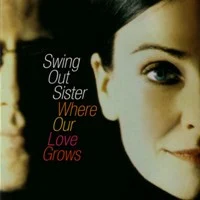Year: 1993
File: MP3@320K/s
Time: 71:14
Size: 163,5 MB
Art: Front
(4:49) 1. My Ship
(3:48) 2. Bewitched
(4:46) 3. My Foolish Heart
(5:40) 4. Someone to Watch Over me
(3:42) 5. I'll Be Around
(4:07) 6. Love Walked In
(4:44) 7. It Never Entered My Mind
(4:38) 8. My One and Only Love
(4:26) 9. I'm Glad There is You
(4:05) 10. If I Should Lose You
(4:56) 11. Ill Wind
(4:10) 12. Time After Time
(4:04) 13. Where Are You
(4:25) 14. For All We Know
(4:19) 15. They Didn't Believe Me
(4:26) 16. You Go To My Head
Drummer Charlie Watts is the engine that’s kept the Stones rolling for more than half a century. As the band's most unassuming, workmanlike, and reliably dapper member, he has always projected an air of cool nonchalance that contrasts sharply with Mick Jagger’s peacocking swagger and Keith Richards’ outlaw mystique. But his wrist-cracking snare thwacks are what give early signature singles like 1965’s “(I Can’t Get No) Satisfaction” their agitated energy, while his hard-driving rhythm amplifies the apocalyptic menace of “Gimme Shelter.” And when you consider the Stones’ various stylistic experiments over the years the loose Latin-psych jamming of “Can’t You Hear Me Knocking,” the seedy disco of “Miss You,” the strobe-lit club grooves of “Undercover of the Night” it’s Watts’ steady hand anchoring every muse-chasing moment. Outside the Stones, Watts (born in London in 1941) has indulged a life-long love of blues and jazz that predates his career in rock. In 1991, he formed a quintet in tribute to another Charlie Parker and released a series of albums that reinvigorate bop standards, illustrating his foremost dedication: serving the music. "I don't know what show biz is,” he told the San Diego Union-Tribune that year. "There are people who just play instruments, and I'm pleased to know that I'm one of them.” https://music.apple.com/us/artist/charlie-watts/64374085
Personnel: Alto Saxophone – Peter King; Drums – Charlie Watts; Orchestra – Metropolitan Orchestra; Piano – Brian Lemon; Trumpet – Gerard Presencer; Vocals – Bernard Fowler
R.I.P.
Born: 2 June 1941
Died: 24 August 2021
Personnel: Alto Saxophone – Peter King; Drums – Charlie Watts; Orchestra – Metropolitan Orchestra; Piano – Brian Lemon; Trumpet – Gerard Presencer; Vocals – Bernard Fowler
R.I.P.
Born: 2 June 1941
Died: 24 August 2021
Warm & Tender




















